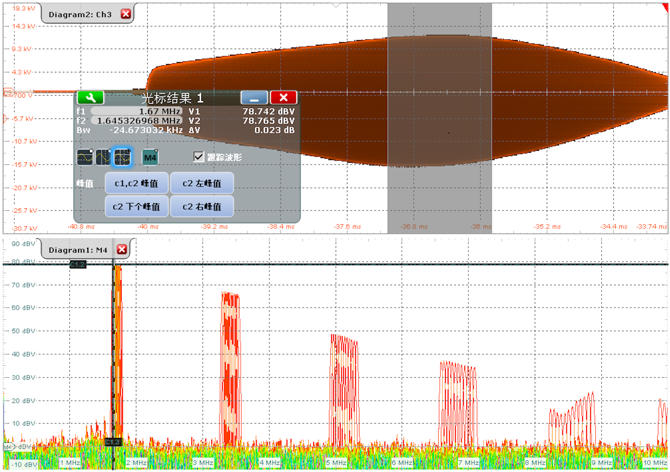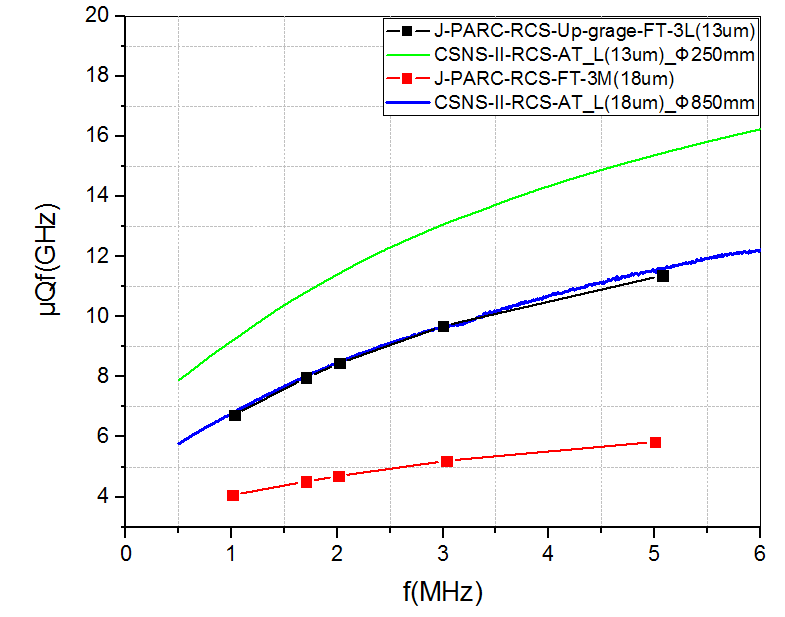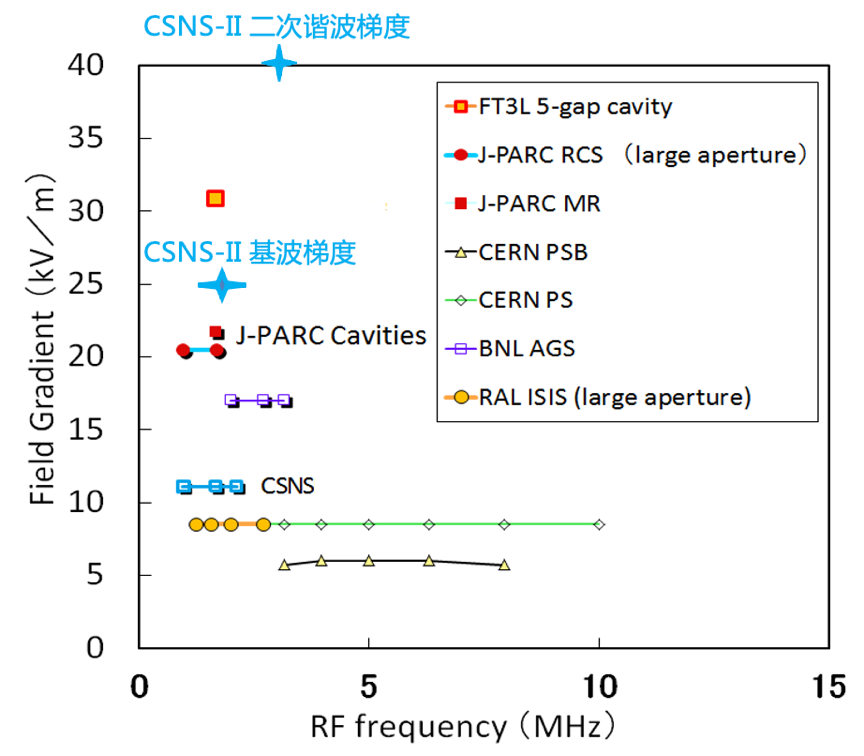The high-power, high-gradient magnetic alloy (MA)-loaded cavity is a key technology that must achieve a breakthrough during the second phase of the China Spallation Neutron Source Project (CSNS-II). After nearly ten years of R&D, the research team has started from basic materials and basic technique.
Significant progress has been made in the development of a high-power, high-gradient domestic MA-loaded cavity: In the fundamental mode, with a 50% duty cycle, and the second harmonic mode, with a 15% duty cycle, the acceleration gradients reached 26 kV/m and 40.76 kV/m, respectively. Using 18 um and 13 um MA strips, the most critical technical index uQf value of the MA ring reached 9.67 GHz @ 3 MHz and 13 GHz @ 3 MHz, which is about 30% higher than the performance index publicly reported by J-PARC in Japan, thus reaching the international advanced level.
All basic materials including iron-based nanocrystalline alloys were made domestically, and MA ring manufacturing, cavity design and related technologies have completely independent intellectual property rights. Because of its high magnetic permeability and high saturation magnetic flux density, MA materials are used to replace traditional ferrite materials to achieve a wider operating frequency band and a higher acceleration gradient.
The high-power, high-gradient MA-loaded cavity is the key equipment for the upgrade of the CSNS-II rapid cycling synchrotron. Since 2012, the research team has carried out related research work on the key technologies of MA ring manufacturing, such as high-insulation low-stress SiO2 coating, large-size constant-tension horizontal winding, strong transverse magnetic annealing, and surface waterproof packaging.
At present, the development and mass production of high-performance MA rings with an outer diameter of 850 mm have been completed. At the same time, the design and processing of a cavity with high cooling efficiency, as well as long-term high-power verification experiments have been carried out, and the autonomy of key technologies has been achieved. The relevant results provide strong support for the smooth implementation of CSNS-II.
Relevant research results have broad application prospects in high-power, high-current proton/heavy ion accelerators, FFAG accelerators, pulse induction accelerators, and particle therapy accelerators. The project was funded by the National Natural Science Foundation of China (11175194, 11875270, U1832210) and the Key Cultivation Project and Youth Innovation Promotion Association of the Chinese Academy of Sciences.
 The fundamental mode and second harmonic mode cavity voltage of the domestic MA-loaded cavity
The fundamental mode and second harmonic mode cavity voltage of the domestic MA-loaded cavity
 Comparison of uQf value between domestic MA ring and J-PARC MA ring
Comparison of uQf value between domestic MA ring and J-PARC MA ring
 Comparison of acceleration gradients of the world's major proton synchrotrons
Comparison of acceleration gradients of the world's major proton synchrotrons



